 W
WMoths of the Comoros represent about 320 known moth species. The moths and butterflies together make up the taxonomic order Lepidoptera.
Achaea catella, the banded achaea, is a moth of the family Erebidae. The species was first described by Achille Guenée in 1852. It is found in Africa, including Senegal, South Africa, Réunion and Namibia.
 W
WAchaea lienardi, or Lienard's achaea, is a fruit piercing moth of the family Erebidae first described by Jean Baptiste Boisduval in 1833. It is found in most countries in tropical Africa from Egypt to South Africa, including the islands of Madagascar, Réunion and Mauritius. The larva may feed on various plants, belonging to the genera Maerua, Pappea, Rhus, Citrus, Schotia, Sideroxylon, Ptaeroxylon, Acacia, Allophylus, Croton, Pinus and Ricinus.
 W
WAcherontia atropos, the (African) death's-head hawkmoth, is the most widely recognized of three species within the genus Acherontia. It is most commonly identified by the vaguely skull-shaped pattern adorning the thorax, the characteristic from which its common and scientific names are derived. The species was first given its scientific name by Carl Linnaeus in his 1758 10th edition of Systema Naturae.
 W
WAgrotis longidentifera, the brown cutworm, is a moth of the family Noctuidae described by George Hampson in 1903. It is found in eastern and southern Africa and several islands in the Indian Ocean.
 W
WAngustalius malacellus is a moth of the Crambinae family. It is known from Spain, Portugal, France, Sardinia, Sicily, Italy, Greece and Crete. It has also been recorded from the Comoros, Rwanda, South Africa, Ethiopia, Madagascar, La Réunion, Mauritius and Fiji.
 W
WAnomis auragoides is a moth of the family Noctuidae first described by Achille Guenée in 1852. It is found in central and southern Africa, and is known from Cape Verde, Uganda, the Democratic Republic of the Congo, South Africa, Madagascar, the Comoros and Réunion.
 W
WAnticarsia irrorata, the owl moth, is a species of moth in the family Noctuidae. It is native to the Old World tropics.
 W
WAsota borbonica is a moth of the family Erebidae. It is found in Africa, including South Africa, Mauritius, Réunion and Madagascar.
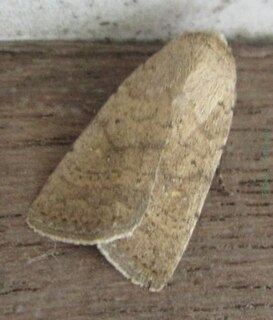 W
WAthetis ignava is a moth of the family Noctuidae. It is found in Southern and Eastern Africa, including the islands of the Indian Ocean.
Basiothia medea, the small verdant hawk, is a moth of the family Sphingidae. It is common in open habitats throughout the Ethiopian Region, including Madagascar. It is however probably absent from the equatorial forest belt, except as a vagrant. The species is an active migrant.
 W
WBastilla angularis is a moth of the family Noctuidae first described by Jean Baptiste Boisduval in 1833. It has a Panafrican distribution. Countries where it is found include Swaziland, Gabon, Cabo Verde, São Tomé, Réunion and Madagascar.
 W
WBrithys crini, the amaryllis borer, crinum borer, lily borer or Kew arches, is a moth of the family Noctuidae. It is a garden pest in parts of its range, as their larvae damage the stems and leaves of lilies, especially lilies of the family Amaryllidaceae.
 W
WCadarena is a monotypic moth genus of the family Crambidae erected by Frederic Moore in 1886. Its only species, Cadarena pudoraria, was first described by Jacob Hübner in 1825. It occurs throughout tropical and subtropical Africa and in India.
 W
WCadarena is a monotypic moth genus of the family Crambidae erected by Frederic Moore in 1886. Its only species, Cadarena pudoraria, was first described by Jacob Hübner in 1825. It occurs throughout tropical and subtropical Africa and in India.
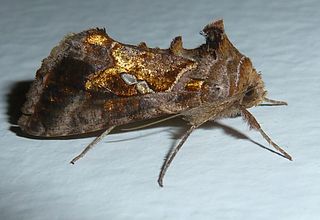 W
WThe Tomato Looper or golden twin-spot moth (Chrysodeixis chalcites) is a moth of the family Noctuidae, subfamily Plusiinae. It is found from southern Europe, the Levant and tropical Africa, but can be found in great parts of Europe because it is a migratory species. It has also recently been reported from North America.
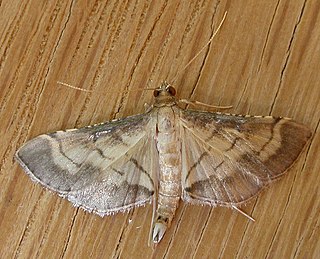 W
WCnaphalocrocis poeyalis, the lesser rice-leafroller, is a species of moth of the family Crambidae described by Jean Baptiste Boisduval in 1833. They can be found from Africa to the Pacific region, including Australia, Réunion, India, Fiji, Hong Kong and French Polynesia.
 W
WCoelonia fulvinotata is a moth of the family Sphingidae first described by Arthur Gardiner Butler in 1875. It is known from most habitats throughout the Afrotropical realm, from the Gambia east to Ethiopia and south to northern South Africa and Madagascar.
 W
WCondica conducta is a moth of the family Noctuidae described by Francis Walker in 1857. It has a wide range and occurs in Africa as well as in Hong Kong, Fiji, the Society Islands and the Chagos Archipelago.
 W
WCtenoplusia limbirena, the Scar Bank gem, or silver U-tail, is a moth of the family Noctuidae. It is found in south-western Europe, Africa, the Canary Islands, Arabia, the southern Himalayas, India, Sri Lanka, Indochina to south-eastern China, Taiwan, Sulawesi, Bali and Timor. In New Zealand, it has been established since 2011.
 W
WCyligramma fluctuosa is a moth of the family Noctuidae. It is found in most parts of Africa, from Sénégal in the West to Kenya in the East, and Egypt in the North to South Africa, including the Indian Ocean islands
 W
WCyligramma latona, the cream-striped owl, is a moth of the family Noctuidae. The species was first described by Pieter Cramer in 1775.
 W
WDaphnis nerii, the oleander hawk-moth or army green moth, is a moth of the family Sphingidae. It was described by Carl Linnaeus in his 1758 10th edition of Systema Naturae.
 W
WDiaphania indica, the cucumber moth or cotton caterpillar, is a widespread but mainly Old World moth species. It belongs to the grass moth family, and therein to the large subfamily Spilomelinae. This moth occurs in many tropical and subtropical regions outside the Americas, though it is native to southern Asia; it is occasionally a significant pest of cucurbits and some other plants.
Dysgonia torrida, the jigsaw, is a moth of the family Erebidae. The species was first described by Achille Guenée in 1852. It is found from the tropical and subtropical areas of Africa to Spain, southern Italy, Greece, Syria, Israel, Iran, Uzbekistan towards India, Sri Lanka and Myanmar.
 W
WEarias biplaga, the spiny bollworm, is a moth in the family Nolidae. The species was first described by Francis Walker in 1866. It is found throughout subtropical Africa including Atlantic and Indian Ocean islands.
 W
WEarias insulana, the Egyptian stemborer, Egyptian bollworm, spiny bollworm or cotton spotted bollworm, is a moth of the family Nolidae. The species was first described by Jean Baptiste Boisduval in 1833. It is found in most of Africa, southern Europe, the Near East and Middle East, Japan, Taiwan, the Philippines, Australia and Hawaii. It is a rare in immigrant in Great Britain.
 W
WEtiella zinckenella, the pulse pod borer moth, is a moth of the family Pyralidae. It is found in southern and eastern Europe and in the tropics and subtropics of Africa and Asia. They have also been introduced to North America and Australia. It is usually a minor pest for many legumes, but can be a serious pest.
 W
WEublemmoides apicimacula, also known as the chocolate tip eublemma, is a moth of the family Noctuidae. It is found in Africa south of the Sahara, Senegal, Mauritania, São Tomé and Principe, Kenia, South Africa, the Indian Ocean islands and in Yemen.
 W
WEuchloron is a monotypic moth genus of the family Sphingidae first described by Jean Baptiste Boisduval in 1875. Its only species, Euchloron megaera, the verdant hawk, is known from most of Africa and Yemen. It is a migratory species.
 W
WGrammodes stolida, the geometrician, is a moth of the family Erebidae. The species was first described by Johan Christian Fabricius in 1775. It is found in Africa, southern Europe, most of Asia and Australia. It migrates to central and northern Europe as far north as England, Denmark and Finland.
 W
WHellula undalis, the cabbage webworm or Old World webworm, is a moth of the family Crambidae. It is a widespread species which is found from Europe across Asia to the Pacific. It was first described from Italy.
 W
WHippotion celerio, the vine hawk-moth or silver-striped hawk-moth, is a moth of the family Sphingidae. It was described by Carl Linnaeus in his 1758 10th edition of Systema Naturae.
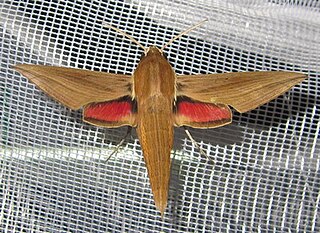 W
WHippotion eson is a moth of the family Sphingidae. It is very common in most habitats throughout the Ethiopian Region, including Madagascar and the Seychelles. It is a migratory species.
 W
WHymenia perspectalis, the spotted beet webworm moth, is a species of moth of the family Crambidae. It is found in various parts of the world, including North America, where it is found from Maine to Florida, west to Texas and north to Michigan and Ontario. It is also found in Belize, Hong Kong, Jamaica, Australia (Queensland), the Comoros, Equatorial Guinea, Réunion and South Africa. The species was described by Jacob Hübner in 1796.
 W
WHypena obacerralis is a moth of the family Erebidae. It is found throughout Africa, the Middle East and South Asia and Malaysia.
 W
WMacroglossum trochilus, the African hummingbird hawk-moth, is a moth of the family Sphingidae. The species was first described by Jacob Hübner in 1823. It is very common in most habitats throughout southern and eastern Africa and in the Comoro Islands.
 W
WMocis frugalis, the sugarcane looper, is a moth of the family Erebidae. The species was first described by Johan Christian Fabricius in 1775. It is found in several parts of the world, including India, Sri Lanka, West African countries and other Oriental regions. The adult is a fruit piercer and a major pest of crops.
 W
WMocis mayeri is a moth of the family Erebidae first described by Jean Baptiste Boisduval in 1833. It has a wide range in Africa, which includes Cameroon, Cape Verde, the Comoros, the Democratic Republic of the Congo, Eritrea, Ghana, Kenya, Réunion, Madagascar, Malawi, Mauritius, Mozambique, Nigeria, Senegal, the Seychelles, Sierra Leone, South Africa, Sudan, Tanzania, the Gambia, Uganda, Zambia and Zimbabwe. It is also found in Saudi Arabia and Yemen.
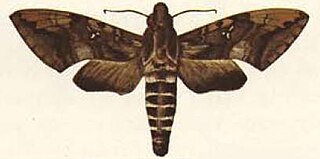 W
WNephele accentifera, the accented hawk, is a moth of the family Sphingidae. The species was first described by Palisot de Beauvois in 1821. It is common in most habitats throughout the Ethiopian Region, excluding Madagascar and the Cape Peninsula.
 W
WNomophila noctuella, the rush veneer, is a species of moth of the family Crambidae.
Ophiusa finifascia is a moth of the family Erebidae. It is found in Africa, including South Africa and the Comores.
 W
WPhazaca theclata, the cotton leaf roller, is a moth of the family Uraniidae. It was first described by Achille Guenée in 1858. It is known from Africa south of the Sahara, from Saudi Arabia, as well as from India, Japan, Myanmar, Nepal and Sri Lanka.
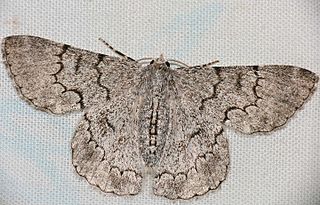 W
WPingasa rhadamaria is a moth of the family Geometridae first described by Achille Guenée in 1858. It is found on the Comoros, Madagascar and São Tomé and Príncipe and in Sierra Leone, South Africa, the Gambia, Zimbabwe, Cameroon, Ghana, Ethiopia, Kenya, Tanzania and Zambia.
 W
WPolydesma umbricola, the monkeypod moth or large tabby, is a species of moth in the family Erebidae. The species is found in southern Europe, Africa, Asia Minor to southern Asia, of India, Sri Lanka, Maldives, the Andaman Islands, including many Indian Ocean islands, like Coëtivy Island, Aldabra, Assumption Island, Madagascar and on Hawaii.
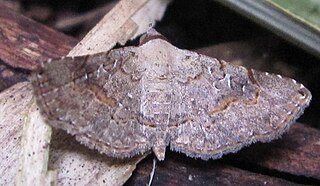 W
WRhesala moestalis is a species of moth of the family Noctuidae first described by Francis Walker in 1866. It is found throughout subtropical Africa, from Sierra Leone in the west to Somalia in the east and South Africa in the south. It is also found on most of the African Indian Ocean islands. and in South and South-East Asia.
 W
WScopula lactaria is a moth of the family Geometridae. It was described by Francis Walker in 1861. It is found in Africa south of the Sahara and on some islands of the Indian Ocean. It can be distinguished from Scopula minorata only by genitalia examination.
 W
WScopula minorata is a moth of the family Geometridae. It was described by Jean Baptiste Boisduval in 1833. It is found in Africa south of the Sahara, the Arabian Peninsula and on the islands of the Indian Ocean. Furthermore, it is found in southern Europe. It can be distinguished from Scopula lactaria only by examination of its genitalia.
 W
WSpodoptera littoralis, also referred to as the African cotton leafworm or Egyptian cotton leafworm or Mediterranean brocade, is a species of moth in the family Noctuidae. S. littoralis is found widely in Africa, Mediterranean Europe and Middle Eastern countries. It is a highly polyphagous organism that is a pest of many cultivated plants and crops. As a result, this species was assigned the label of A2 quarantine pest by the EPPO and was cautioned as a highly invasive species in the United States. The devastating impacts caused by these pests have led to the development of both biological and chemical control methods. This moth is often confused with Spodoptera litura.
 W
WSpodoptera mauritia, the lawn armyworm or paddy swarming caterpillar, is a moth of the family Noctuidae. The species was first described by Jean Baptiste Boisduval in 1833. Able to eat many types of food, it is a major pest throughout the world.
 W
WSpoladea recurvalis, the beet webworm moth or Hawaiian beet webworm, is a species of moth of the family Crambidae. It is found worldwide, but mainly in the tropics.
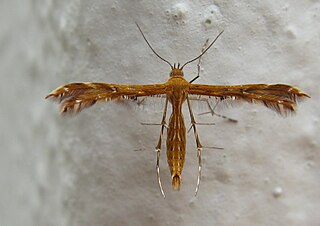 W
WStenodacma wahlbergi is a moth of the family Pterophoridae described by Philipp Christoph Zeller in 1851. It is known from Japan, China, Saudi Arabia, Iran, Sri Lanka, India, Central, East and South Africa, St. Helena, Mauritius, the Seychelles and Rodriguez Island. It has recently been recorded from Vietnam. Records for Australia were based on synonymisation with Stenodacma pyrrhodes.
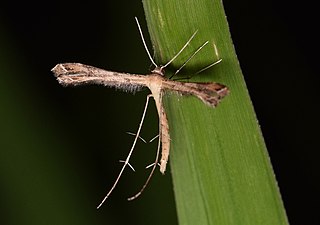 W
WStenoptilodes taprobanes is a moth of the family Pterophoridae. This species has a pantropical distribution, which extends into subtropical areas.
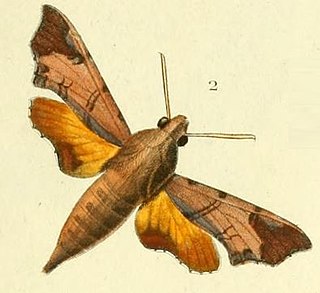 W
WTemnora pseudopylas is a moth of the family Sphingidae. It is very common in eastern and southern Africa, but absent in very dry habitats.
 W
WThalassodes quadraria is a species of moth of the family Geometridae first described by Achille Guenée in 1857. It is found in Africa south of the Sahara and in India and Sri Lanka.
 W
WThysanoplusia orichalcea, the slender burnished brass, is a moth of the family Noctuidae. The species was first described by Johan Christian Fabricius in 1775. It is a polyphagous pest of vegetable crops that originated in Indonesia, from where it spread to Europe, South Asia, India, Sri Lanka, Africa, Australia and New Zealand. In northern Europe it is a migrant species.
 W
WUdea ferrugalis, the rusty dot pearl, is a species of moth of the family Crambidae. The species was first described by Jacob Hübner in 1796.
 W
WUtetheisa pulchella, the crimson-speckled flunkey, crimson-speckled footman, or crimson-speckled moth, is a species of moth of the family Erebidae. The species was first described by Carl Linnaeus in his 1758 10th edition of Systema Naturae.
 W
WXanthopan is a monotypic genus of sphinx moth, with Xanthopan morganii, commonly called Morgan's sphinx moth, as its sole species. It is a very large sphinx moth from Southern Africa and Madagascar. Little is known about its biology, though the adults have been found to visit orchids and are one of the main pollinators of several of the Madagascar endemic baobab (Adansonia) species, including the critically endangered Adansonia perrieri or Perrier's baobab.